The lynching of Ayub Pandith, a Jammu and Kashmir police officer, has further divided Kashmir’s conflict-torn society. Pandith’s murder was barbaric but it was an act of killing produced by continued progression of systemic and systematic dehumanization of Kashmir that both sides of ideological divide, introduced, strengthened, and sustained for last three decades, reports Masood Hussain
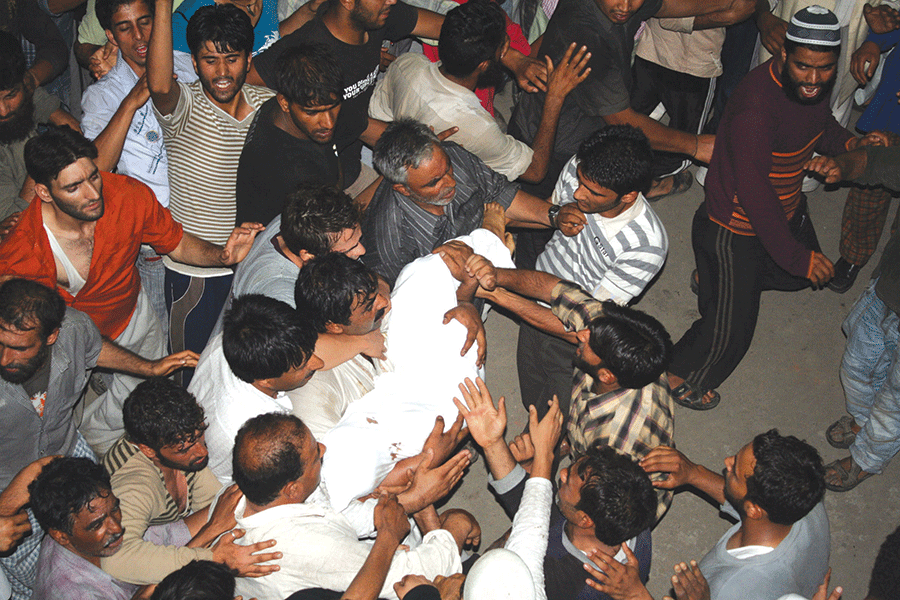
A police officer was publicly lynched during Lail-ul-Qadr and its chilling details horrified people within and outside the mosques. A resident of Nawpora, Mohammad Ayub Pandith, was seen by fellow policemen as a gentle officer. At times, a police officer said, he would even shiver during routine police drills before his seniors.
As overnight supervisor of nearly 20 policemen controlling access to the Jamia Masjid, the grand mosque of Kashmir for centuries, he allegedly started recording a sloganeering crowd outside the mosque. This made him a target of attention. Recording of crowds by strangers is a serious issue in Kashmir, especially Srinagar. Most of the arrests of young protesters are based on the video recordings of the demonstrations that police and paramilitary forces make during law and order situations. In every posse of riot police, at least one cop carries a camera. This helps police to create profiles of suspects; register cases against them and eventually arrest them. Most of these “listed” youth have their careers ruined by the cases and subsequent arrests and tortures.
When the youth saw a dark-complexioned stranger in his civvies recording them, he was confronted. After failing to explain his position, he was attacked. In self defence, police said, he pulled out a weapon from his holster and opened fire that left two injured. This infuriated a charged situation. Angry youth beat him, stripped him, and eventually forcefully hit his head with a huge wooden plank, and left him to die.
The exact details of the crime and the countless questions that are being raised over the murder will now be answered by the investigation; a Special Investigation Team (SIT) is carrying out. But Kashmir was pained by the happening. Perhaps for the first time, people reacted sharply, mostly using social media.
Widespread condemnation of the murder started and ended with the Pandith’s lynching. But this murder was neither the first such killing nor the first act of such cruelty that Kashmir has witnessed.
One of the biggest outcomes of the militancy and a ruthless counter-insurgency was the process of dehumanisation that both sides contributed to. There has never been an instance in which somebody would tell both sides to stick to certain basics that could still call human. Since 1990s, both sides have been accusing each other of resorting to extreme cruelty and passing the buck has remained unchanged
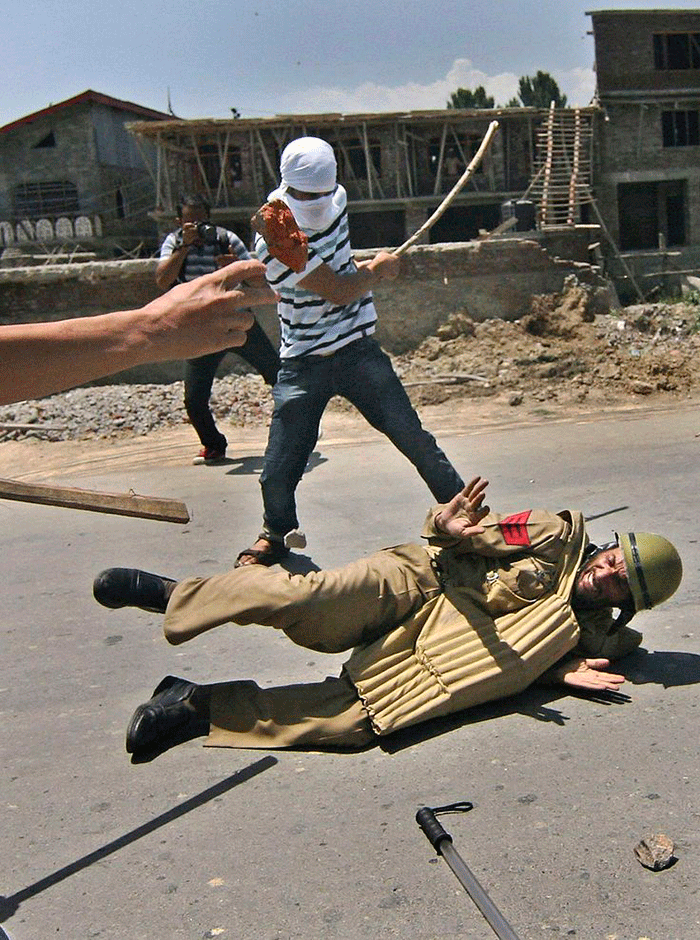
As the counteriinsurgent forces started operations in the early 1990s to crush the rebellion without clear intelligence, the hospitals in Kashmir woke up to a new crisis for which it was not ready at all: the acute renal failure. They knew it for long but this particular ‘epidemic’ followed a completely different pattern.
It was caused by the rampant Roller Treatment during interrogation. When a person is beaten ruthlessly especially on buttocks, muscles beneath the skin rupture, forcing secretion of enzyme called Myoglobin. It coagulates instantly inside the body and finally finds the way to kidneys, according to doctors who handled these cases. After it blocks the nerves and arteries, it creates severe obstructions in nephrons–small tubes in kidney. Besides severe pain, this stops passage of urine. This finally leads to renal failure if dialysis fails to help the victim. It can lead to death if patient does not reach hospital in one day.
This condition could be the result of administering electric current to the genitals, a norm in interrogation throughout the 1990s.
By August 1995, SKIMS alone had managed 170 persons with ‘war crush injuries’ in addition to 11 deaths reported because of this crisis in this hospital only.
But “interrogation” did not stop at electric shocks, beating and roller treatments. It went beyond. Abu Gharaib existed in the crudest form in Kashmir long before American brought global infamy to human dignity by resorting to worst physical and emotional torture to the Iraqi detainees. The only difference was that soldiers manning Papa-II or Gogo avoided photographing the horrors they resorted to. To decimate the personality of a captive, the counter-insurgency grid would strip them, and push iron rods into the body through rectums.
Barbara Crossette of The New York Times was horrified when she reported on June 15, 1990: “Surgeons and other medical staff of one of Srinagar’s largest hospitals crowded into a consulting room, all offering accounts of torture cases they have seen, including a man whose rectum had been torn by the insertion of a dirty bamboo pole.”
In various cases, when these victims reached SMHS, they were breathing but had mangled bellies. Most of them died.
But some of them survived to stand witness like Manzoor Naikoo, a man from Pattan’s Palhalan village. The shopkeeper was arrested by army at the age of 30 in 1990, driven to a deserted school building for interrogation where they stripped him. They tied a piece of cloth to his penis and set it afire, and then they dipped his head into a bucket of water and inserted a stick deep into his rectum, thrusting it in and out. Soldiers deserted him bleeding and unconsciousthere and fled. Pitying him, some youth drove him to a hospital where colostomy, a surgical procedure involving the elementary canal, found multiple perforations in his intestines, stomach, liver, and lungs. Surgeons created a hole to help him pass stools. Since then, this hole in his abdomen is his rectum. He can’t move around.
“He has had three surgeries bt nothing mch has changed,” a person, who knows his crisis, said on the condition that he would stay anonymous. “These days he is witnessing a bulky belly and is unwell.”
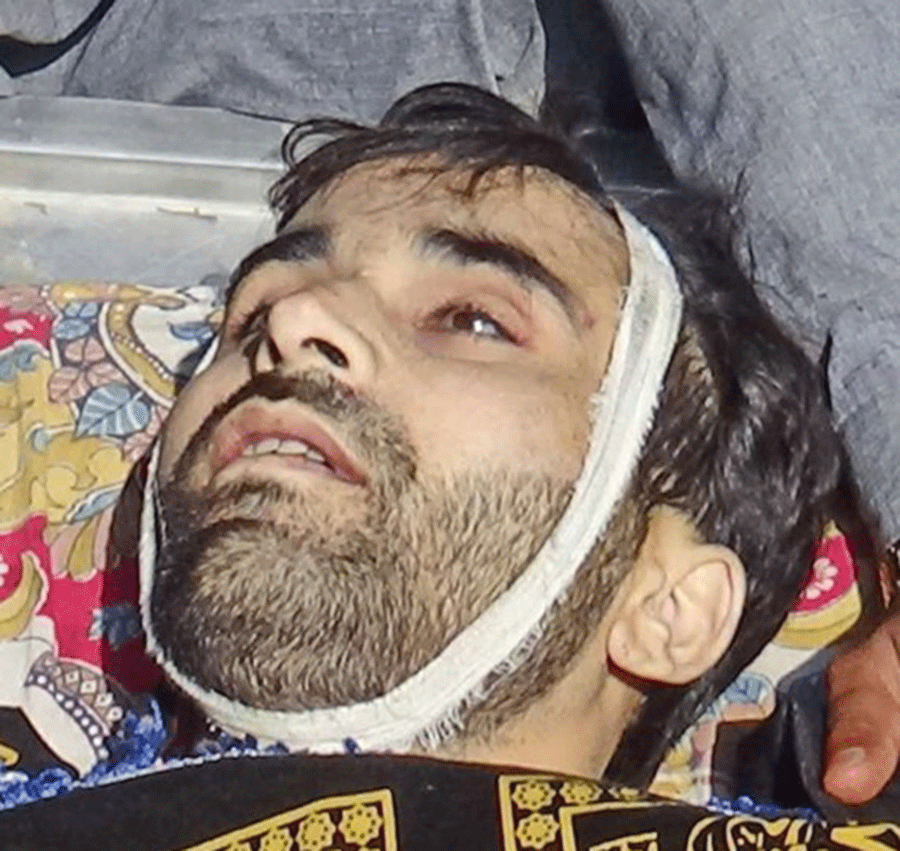
By then the urban militancy has already triggered a scare. Srinagar was dumb founded the day a militant outfit tied an IED to the body of Tehseen Billa, one of its commanders, and blasted him, in 1990. Still, nobody knows if any part of his body was ever recovered from the uptown locality.
In the subsequent days, counter-insurgency set-up introduced this model as part of its operations. Shopkeeper Shamsuddin, a resident of Zeb Garipora (Handwara) was lifted by Rashtriya Rifles (6-RR) on March 9, 2001. A day later, he was taken to neighbouring forests in Magam, not far away from the local garrison and blasted with an IED. Massive disturbances resulted in the area leading as many as 10,000 people to the town. It forced the government to announce a magisterial enquiry, the results of which are still unknown.
Of the countless cases in which victims were killed by pushing them to IED-traps, the worst was reported from Tujjar Sharief in Sopore, where a young groom was take ot of his bedroom on his wedding night and blasted to death.
It was September 2003, the peak time of ‘healing touch’ regime, and the people still required a formal permission from the nearest garrison to host marriage gatherings. Ghulam Hassan Shah, a resident of Tujar, near Sopore, handed over an application to a Major rank officer, heading a garrison in the same village, with a box of sweets to inform the marriage of his son with his dead brother’s daughter. On September 11, 2003 Tahir Shah got his bride Afroza home at midnight. By 4 am, the army raided his house on the pretext that they need to take him away for questioning. The same Major literally dragged him out of his room, according to his father. Three days later, he visited the family again; informing their son was killed in an explosion while leading his team to recoveries. A marriage was doomed.
“How can this house bring any kind of happiness on the face of a father whose son’s body was a few kilograms of mangled flesh wrapped in a polythene bag,” NC lawmaker Mir Saifullah cried in the state assembly, forcing the then Chief Minister to visit the family and promise investigation. The family is still waiting for justice.
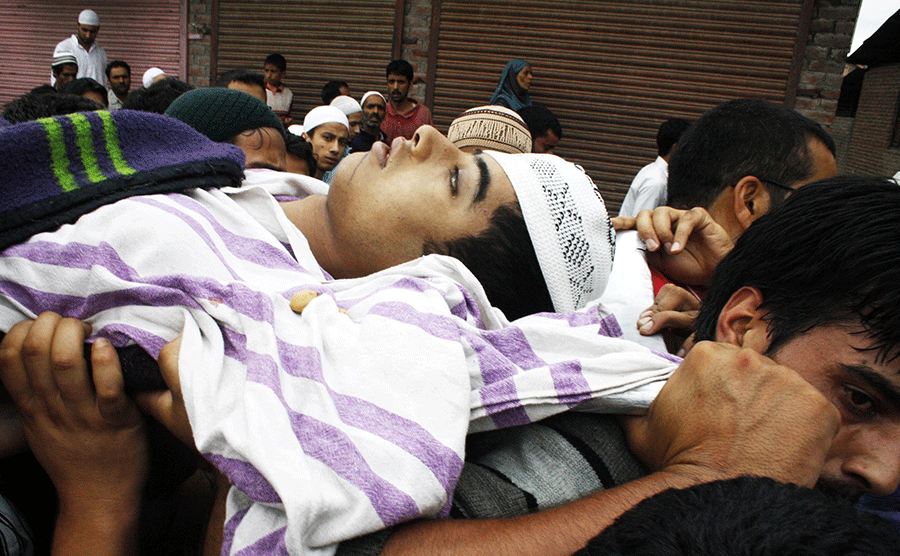
Much earlier on May 17, 1990, BSF had intercepted a marriage party in Anantnag district, fired at the bus, dragged down the bride and gang raped her and her bridesmaid in the fields as the groom was bleeding with five bullets in his body. They both survived to tell the tale of unprecedented horror.
With sexual violence emerging as the new weapon, there were instances gory and grim. One victim in Kunan village in Kupwara was allegedly raped in the same room where her father was bed-ridden for years. In another case, in the same village in February 1991, a three day old born baby was flung down by a soldier as his old mother, recovering from child birth, was raped. The boy survived with a deformity and is condemned to silence, voluntarily.
In Handwara’s Badr Payeen village, a Major rank officer was accused of raping a mother and her minor daughter in November 2004. Though the officer was dismissed from service even though the Court Martial said there was no DNA evidence, the chilling impact of thecrime did not evaporate.
On January 7, 1997, Greater Kashmir reported, the incident of Nazir Ahmad, a young man who had gone to the Wusan Khoie garrison to get his teenage sister freed, who had been arrested by army for no reason, after an overnight detention, an argument at the gate led to his instant killing. The girl eventually took the coffin home.

Rivals soldiers guarding LoC have for decades resorted to decapitation during increased tensions. It the last more than two decades, this crude martial trend in which they slit opponents throat and keep the head as trophy, descended down towards hinterland. This trend, now “popularised” by ISIS in Middle East, existed in Kashmir, albeit rare.
On July 17, 2006, a group of militants caught a teenage Mukhtar Ahmad Sheikh from a playing field in Chak-e-Kachdoora, Shopian, took him to Vehil, where he was butchered like a sheep. Failing to stop the killers, the villagers fled as they could not bear the sight. They returned to see his severed head thrown away at a spot where a militant was killed earlier.
Police recovered throat-slit body of Helmatpora resident, GhulamNabi Khan in maize fields on July 17, 2008. Earlier on April 5, they had recovered bodies of two cops Tariq Ahmad and Nazir Ahmad from Batnoor forests, hours after they were kidnapped.
There are various instances in which some rebels were seen carrying the severed heads of Ikhwan activists as their trophies. The discovery of one such head in a Batamaloo drain triggered such a scare that markets closed, somewhere in 2000.
I have met a man who, at the peak of militancy, was held in Kawoosa House Nowhatta. He was part of the group that included a chirpy young man who would laugh every time he was beaten. “One day, the BSF officer dragged him out of the group and in front of us got a huge butcher knife and butchered him,” the man, who does not want to be identified, said. “For many days, I could not control my urine. I cry every time, that (incident) comes to my mind.”
Generations in Kashmir have grown with a value system in which all differences, love or hate are over, once a person dies. The corpse is supposed to get the respect it deserves. Certain cultures, in fact, decide character of a society by judging the respect it extends to the dead. Off late, however, the fashion in counter-insurgent set up is to drag or disrespect the dead bodies, perhaps to send a message. This is creating a new hate, perhaps more intense than a brutal cordon and search operation (CASO) could create because this is being seen inhuman.
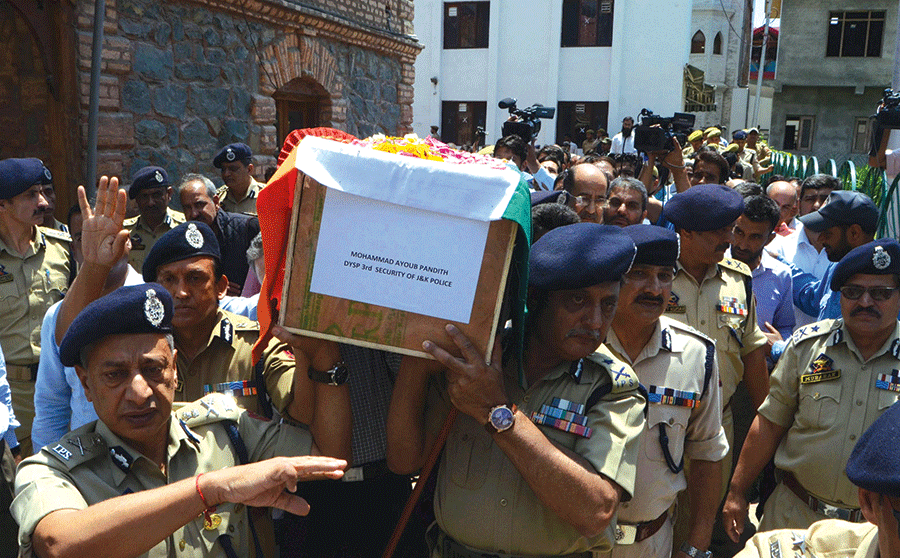
The lynching of Ayub Pandith was not the first such case in Kashmir. Although most of the people lynched to death before him were lynched by the security forces. During the 2010 protests, Sameer Rah, a seven year old boy in Batamaloo in Srinagar bought five pears for Rs 10 for his father. He took one piece with him and left for his uncle’s home. In between he was caught by CRPF men and beaten to death.
At the peak of 2016 unrest, Rashtriya Rifles descended upon Shaar Shali village in Khanmoh belt and marshalled the residents. A lecturer Shabir Ahmed Mungoo was one of the few hundred people who were dragged out. The soldiers beat him relentlessly till he was half dead. The soldiers drove him out of the village in that condition and later handed his body to an ambulance because police skipped taking its custody. The ambulance dropped his body home.
During unrest, managing evacuation of injured to hospitals becomes an issue of life and death. In 2010 unrest, 46 ambulances were seriously damaged and more than a dozen drivers survived injured. Though most of the attacks were carried by paramilitary, there were a few by mobs too. This forced a situation that the district hospitals would manage the seriously ailing patient till midnight and then ambulances would ferry them to Srinagar.
In 2016, unrest the medical ambulance drivers skipped the nights because injuries were not manageable in peripheral hospitals. There were at least four cases in which the ambulances were halted for protracted periods leading to inordinate delay and eventual death of the injured. In one case, an ambulance driver was hit by 300 pellets but he still took the risk of driving the patient to the hospital. Both survived. Unlike 2010, the number of ambulances damaged by the two sides crossed 250 by the end of October, of which 190 belonged to Directorate of Health Services alone. Unlike 2010, when paramilitary was intercepting the ambulances, 2016 saw state police joining them too.
Seemingly both sides are flouting their avowed positions. Rebels invoke Islam but skip sticking to the principles of engagement, clearly stated. The security grid works on tax payer’s money, swears by constitution, and has a clear SOP but still wishes not to take prisoners. This has encouraged criminality in the society and brought law to disrepute.
While an effort should have been by the society and the government to work for humanising the basics of engagement, there are efforts to add to the crisis. “In a war and love, everything is fair,” Ram Madhav, the National General Secretary of BJP, and co-author of Agenda of Alliance, the ruling coalition’s gospel, said in 2017. Is it this “fairness” that has killed the fear of death in Kashmir and added to the de-humanisation of a society that once would say Aasman Vouzulyav (sky turned red) when a person would die in a road accident? Any time is a good time to make an effort. Why not now when we a still mourning Pandith?















